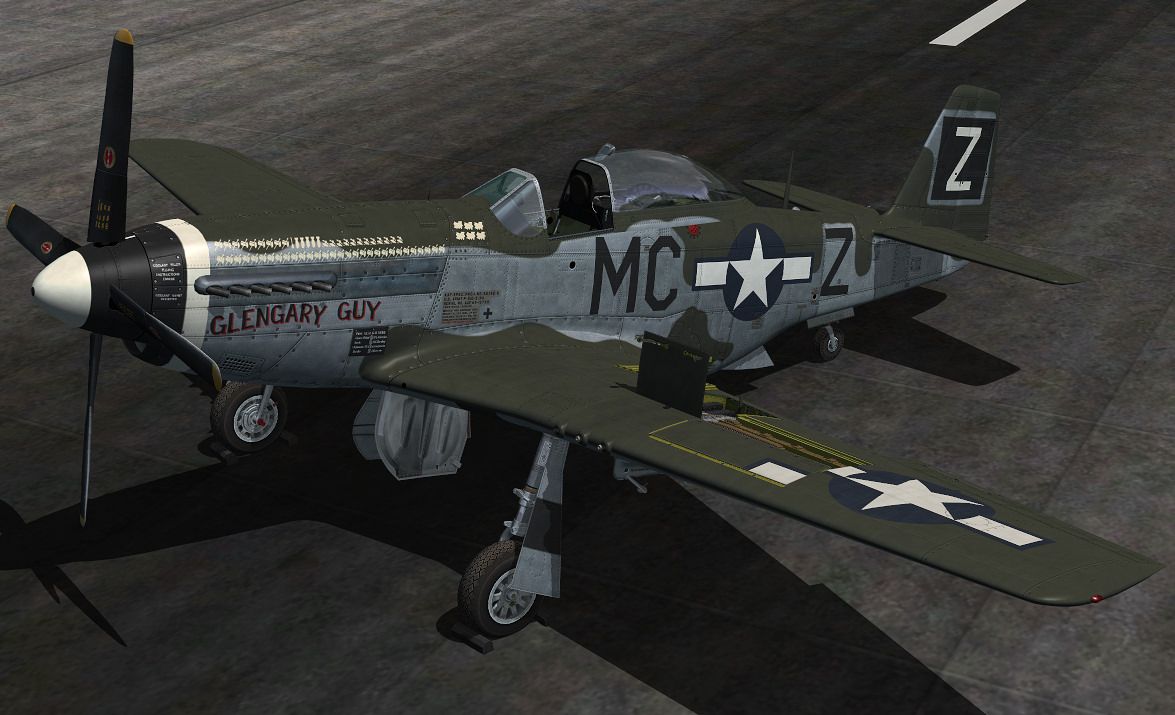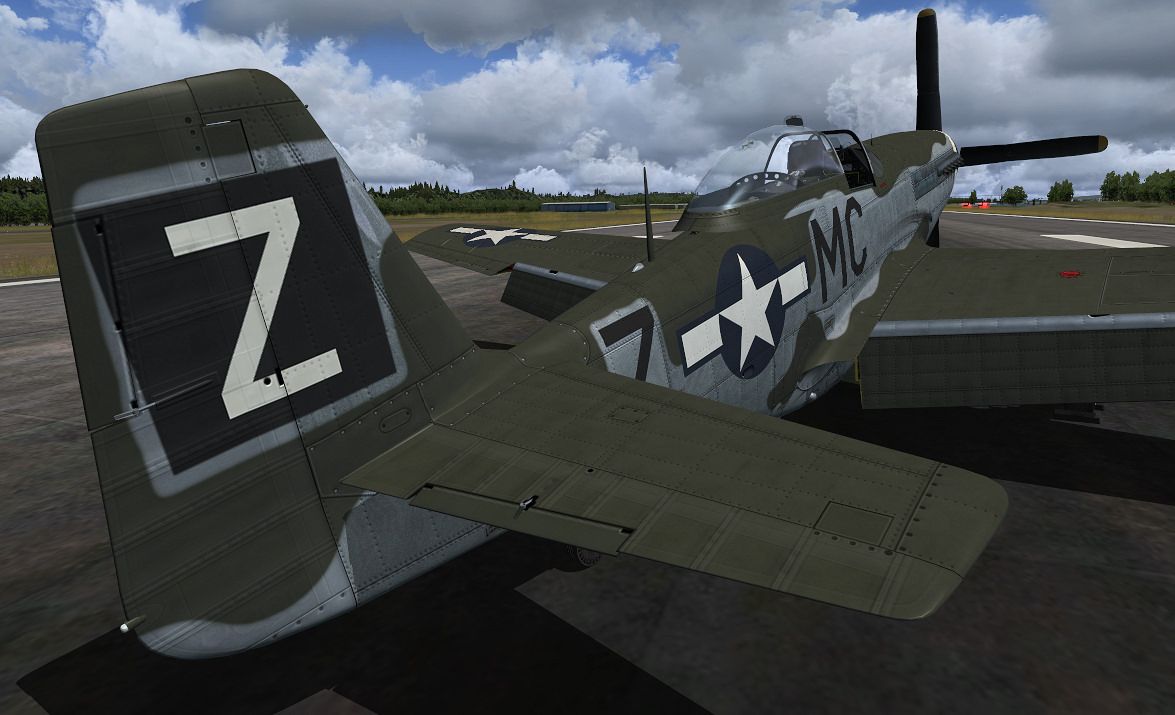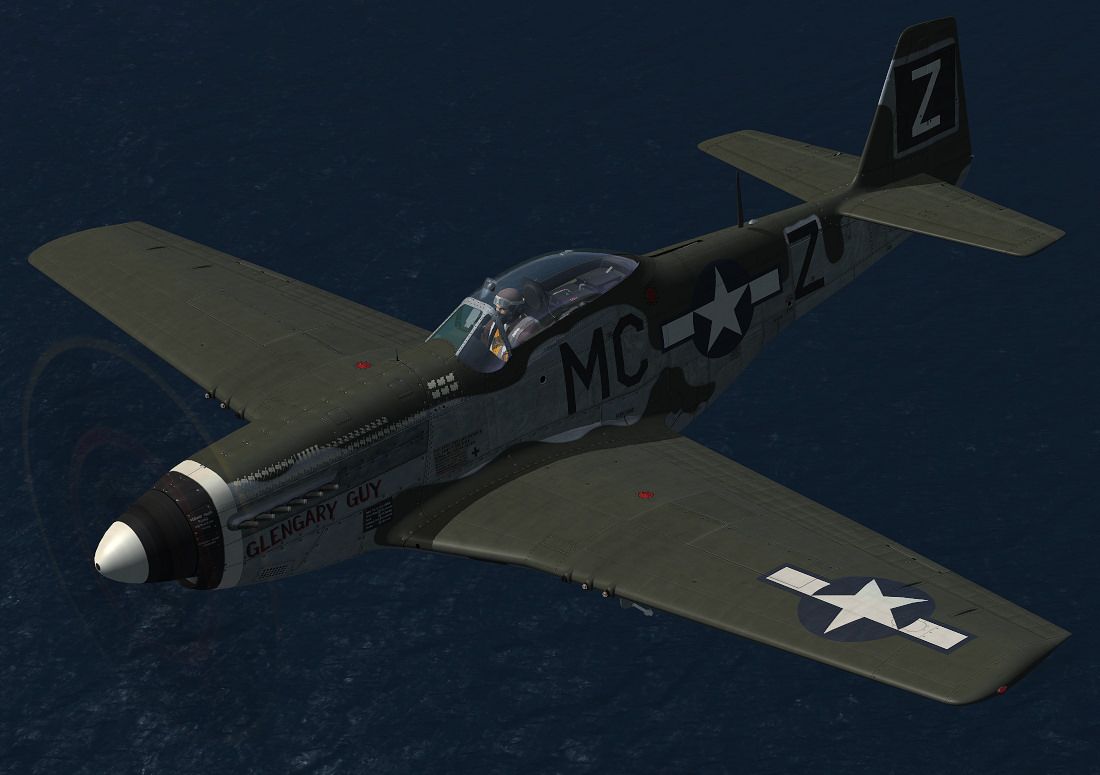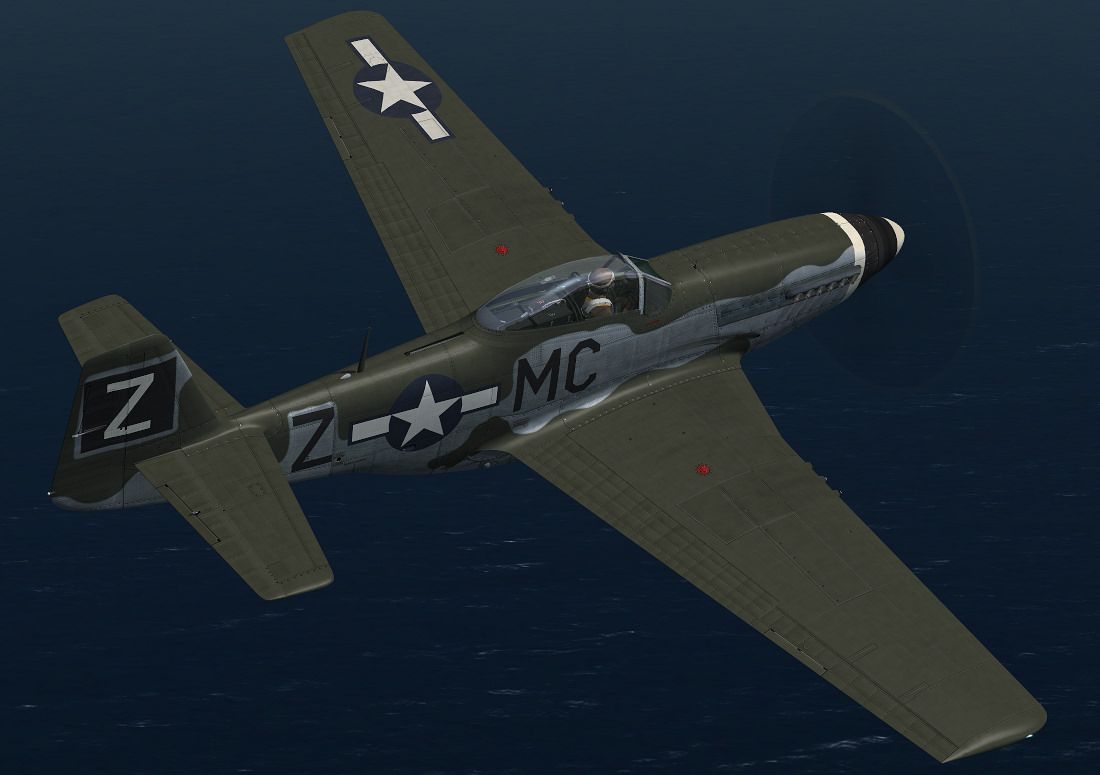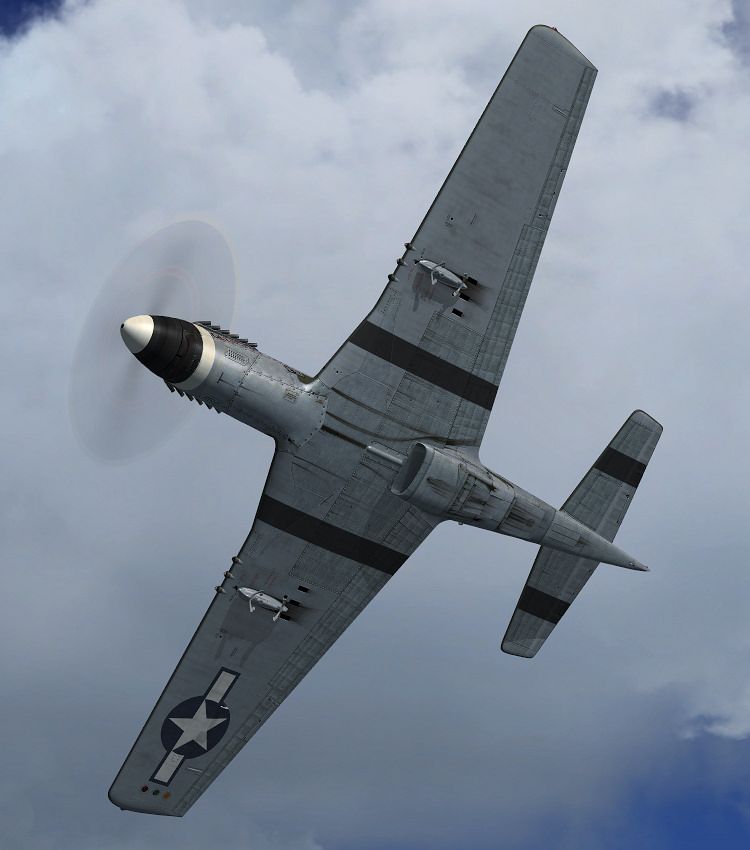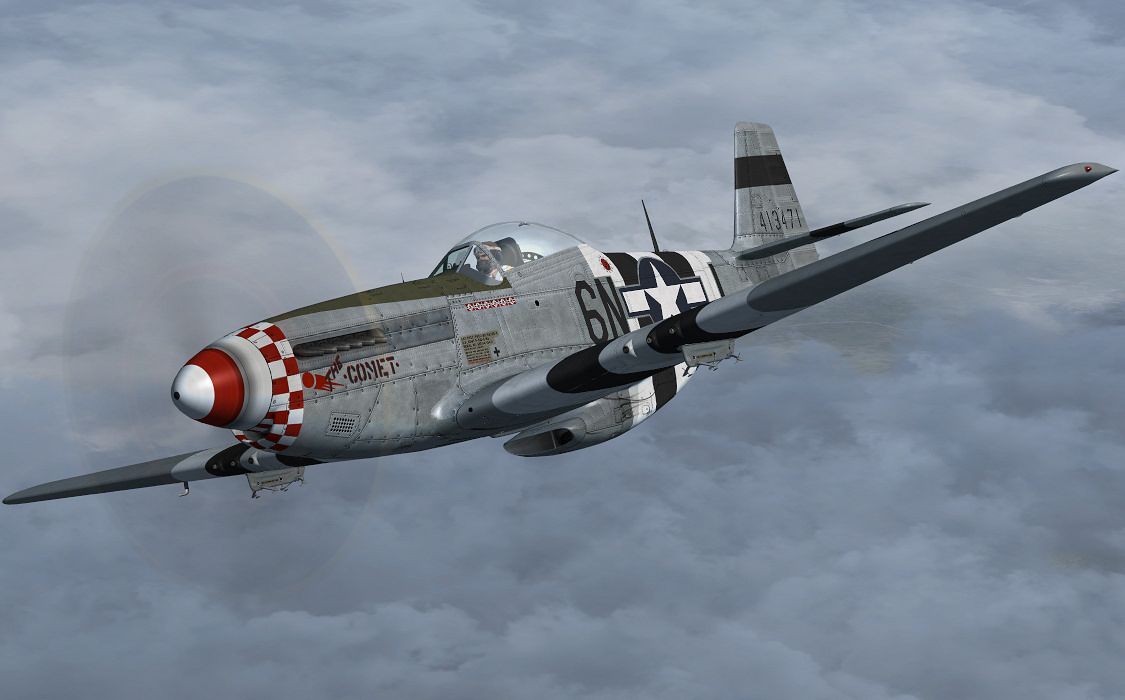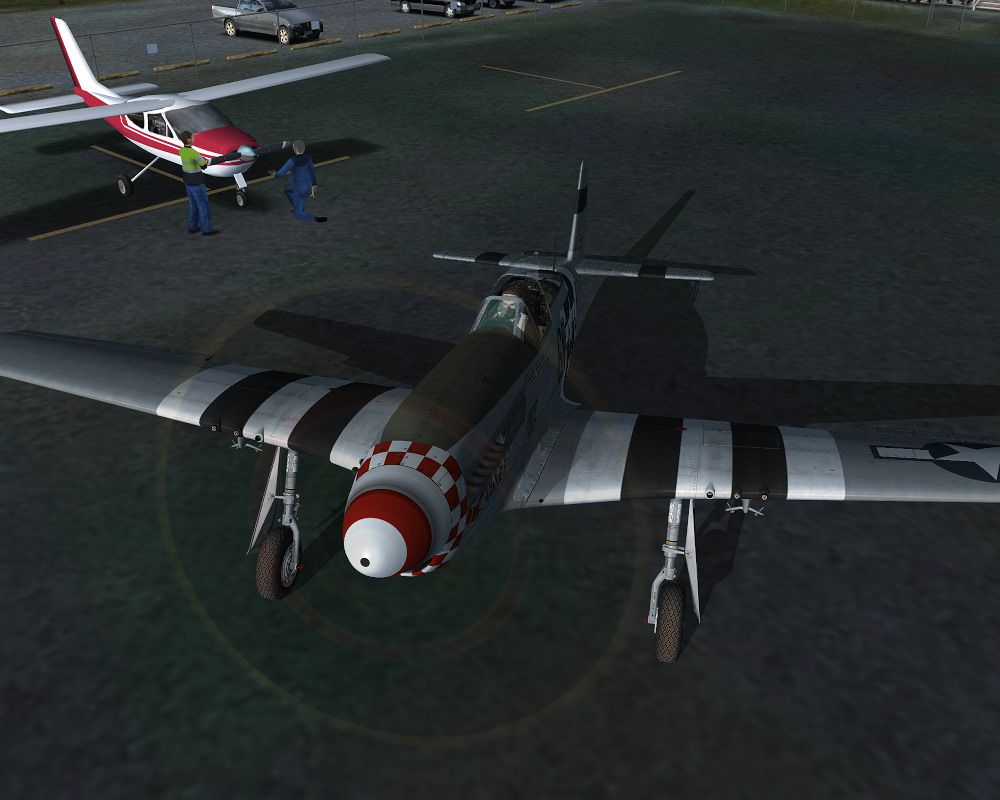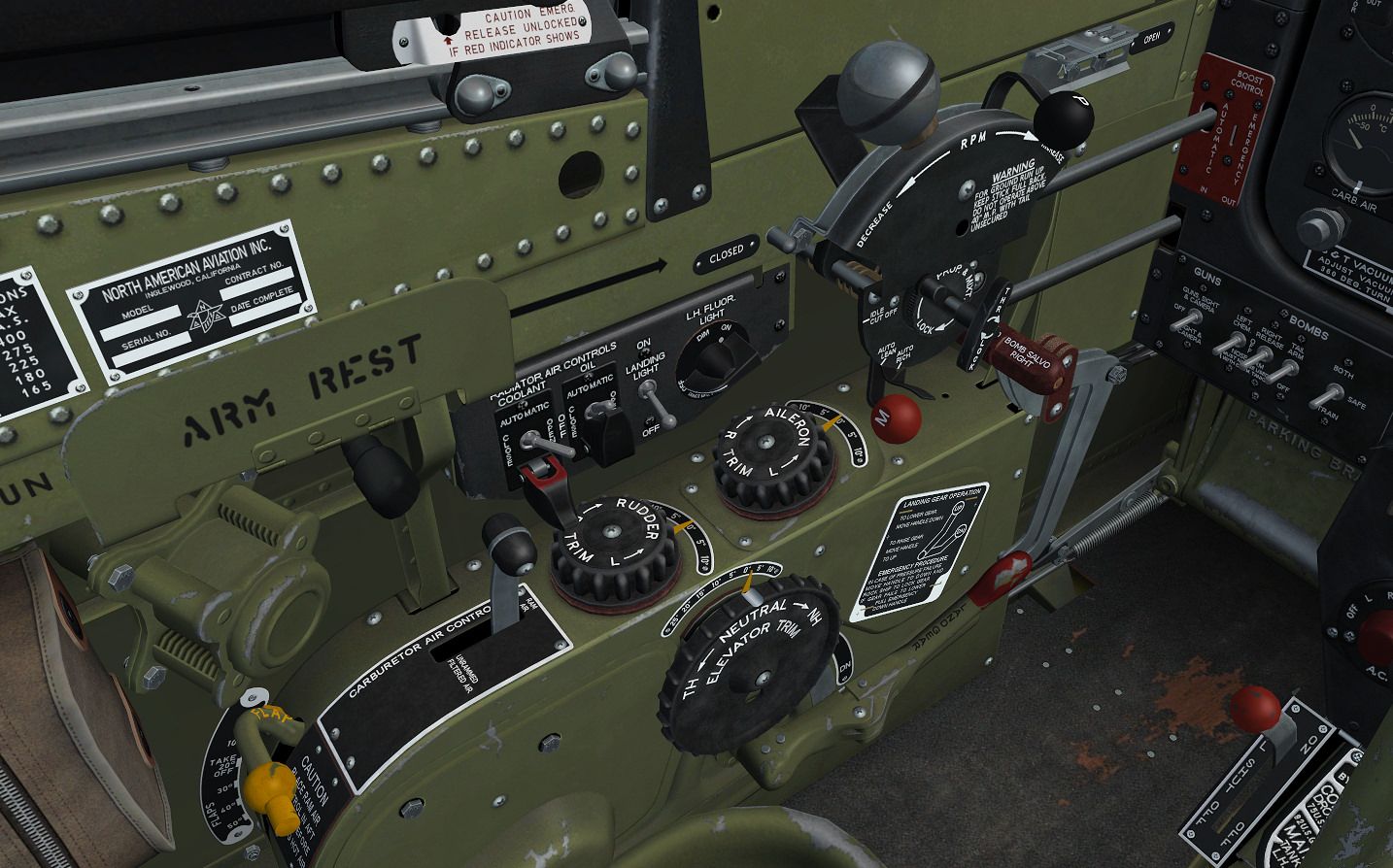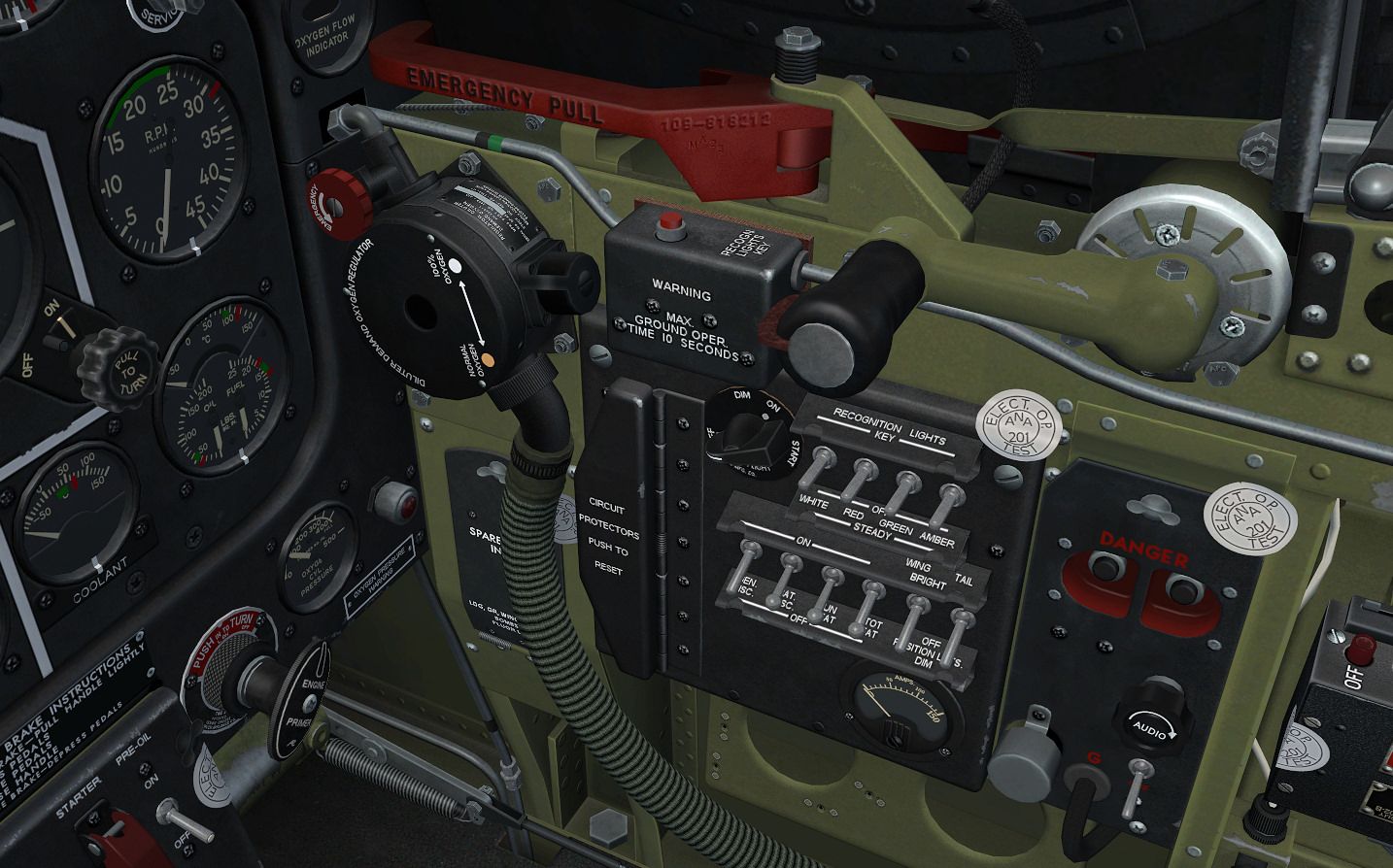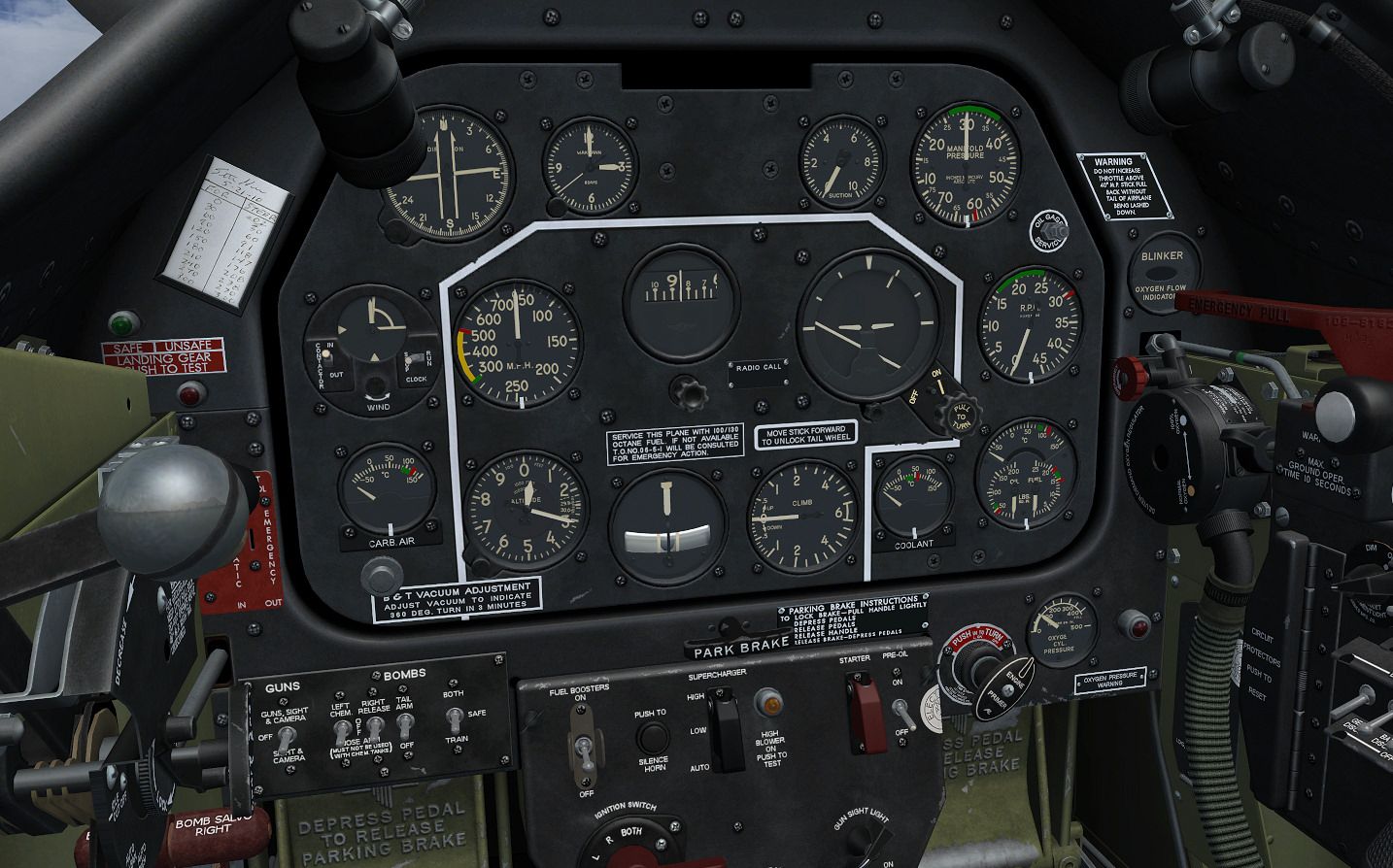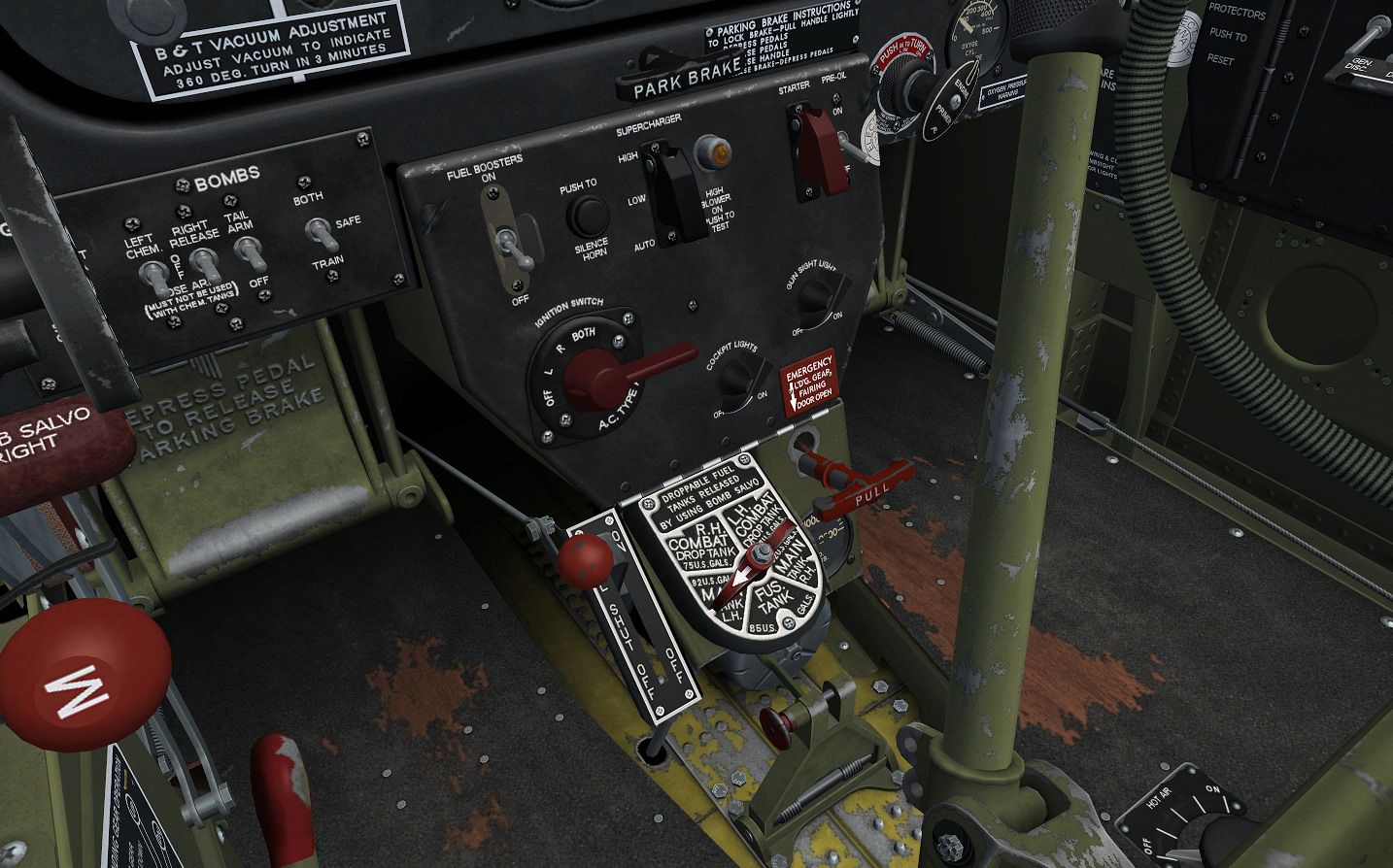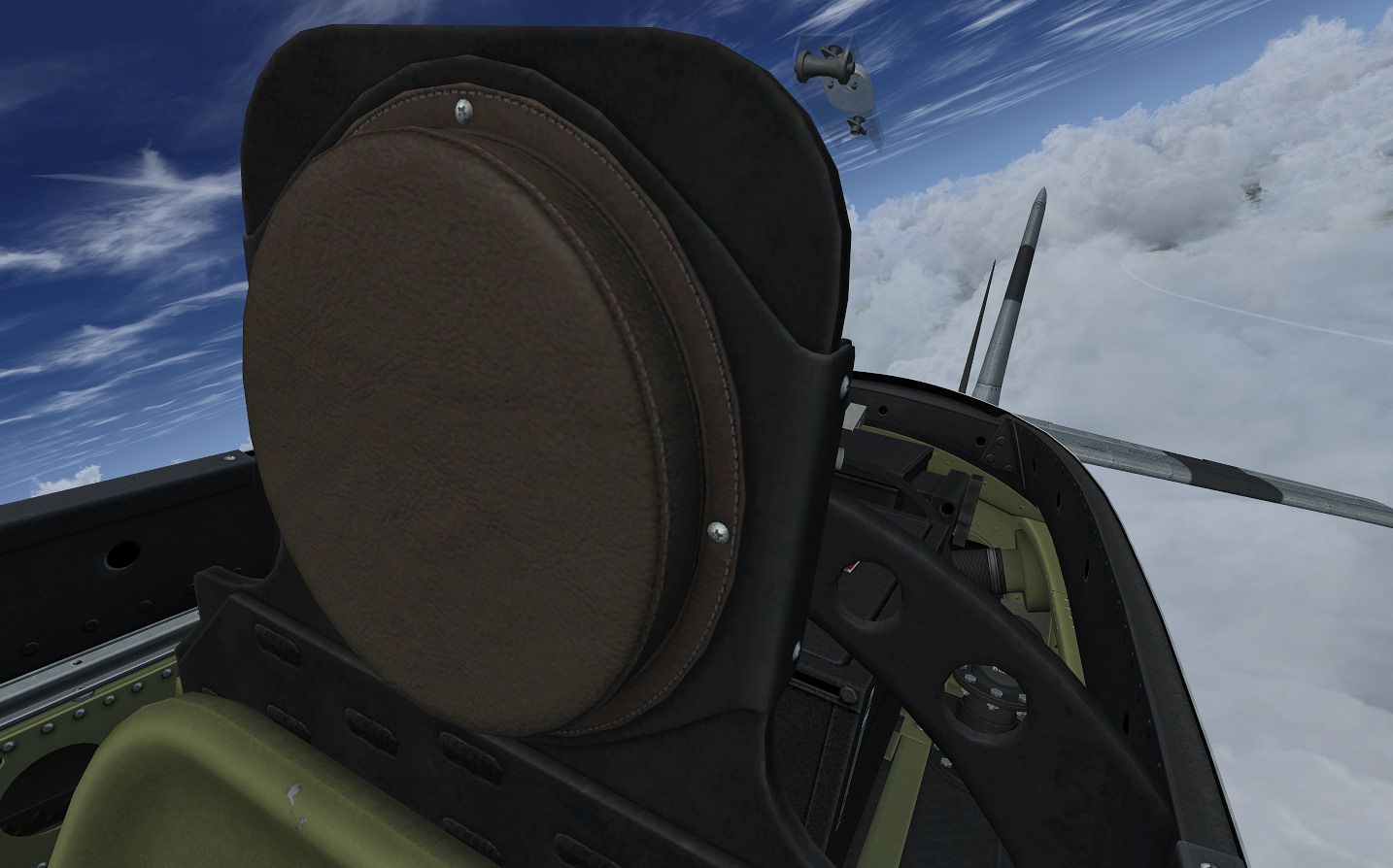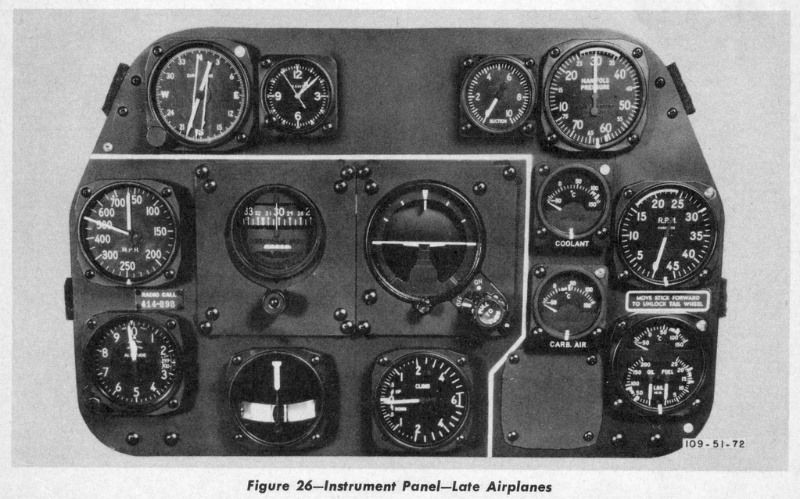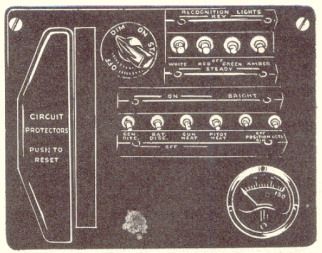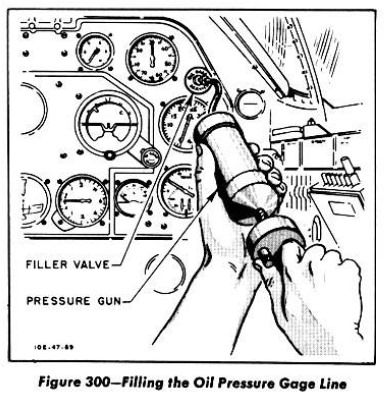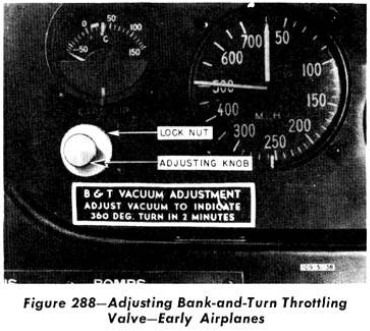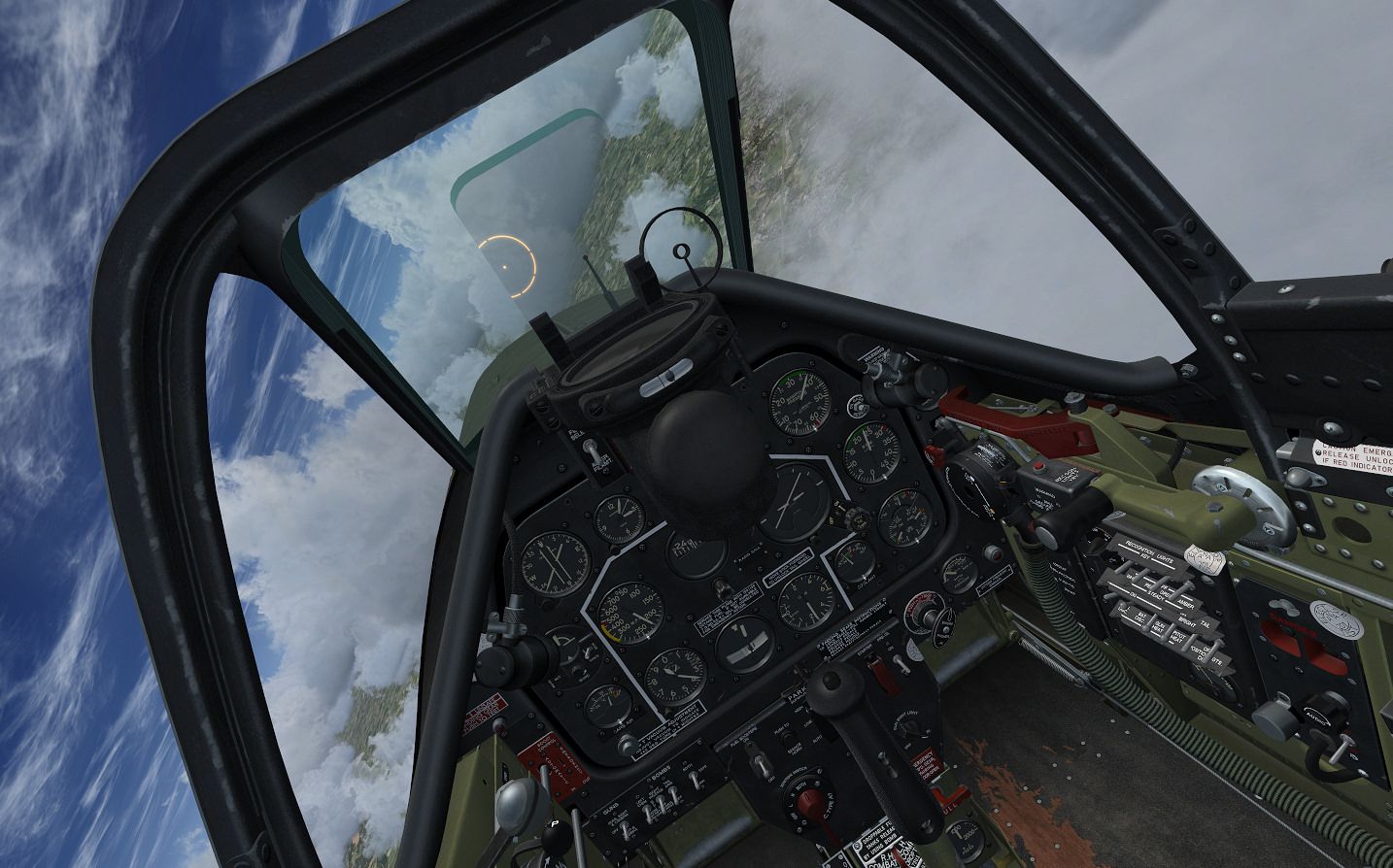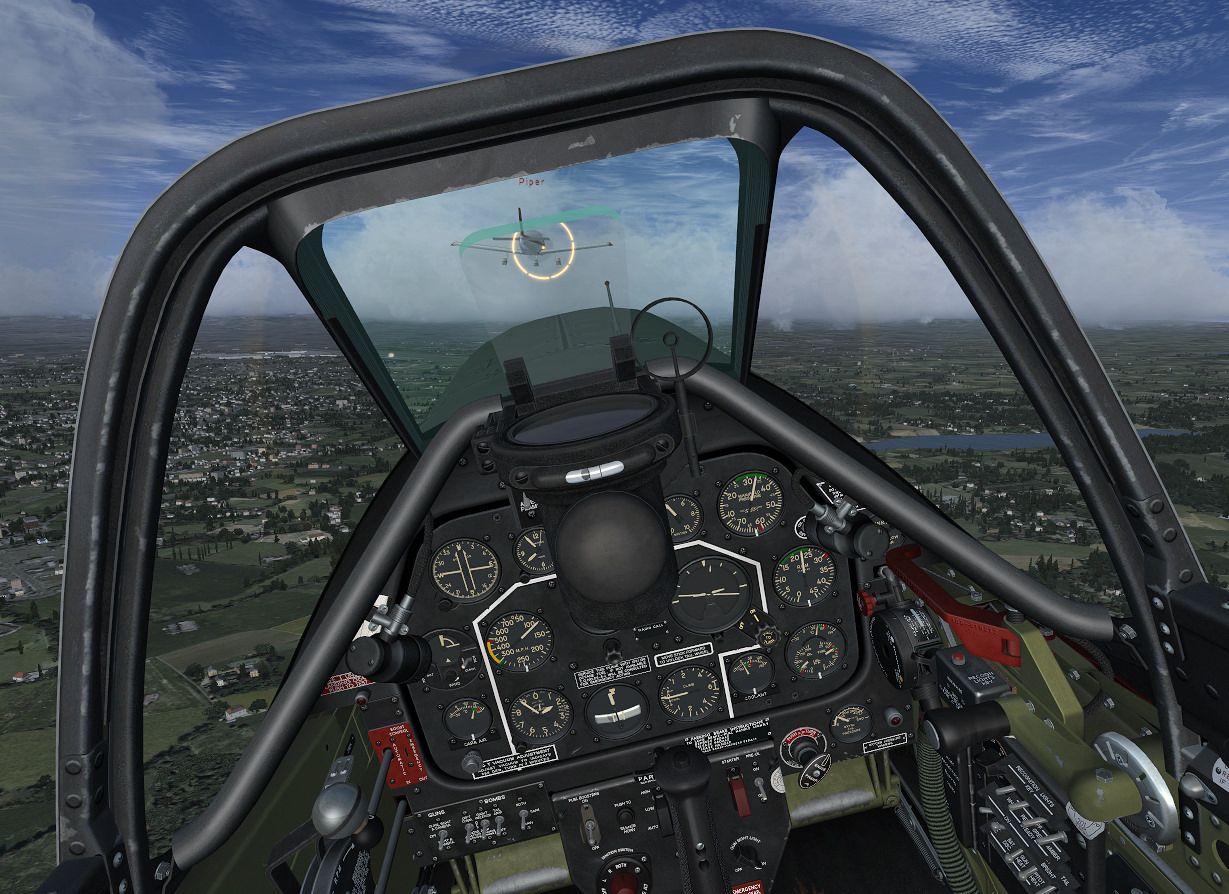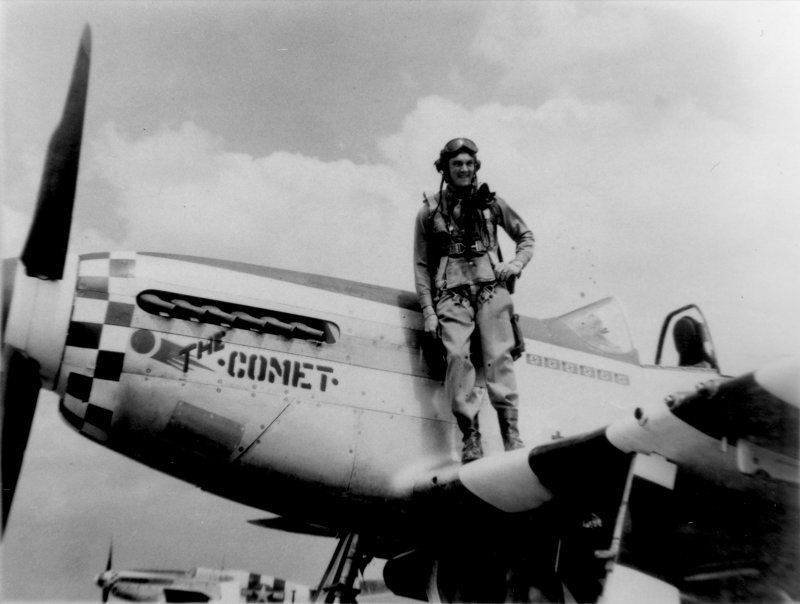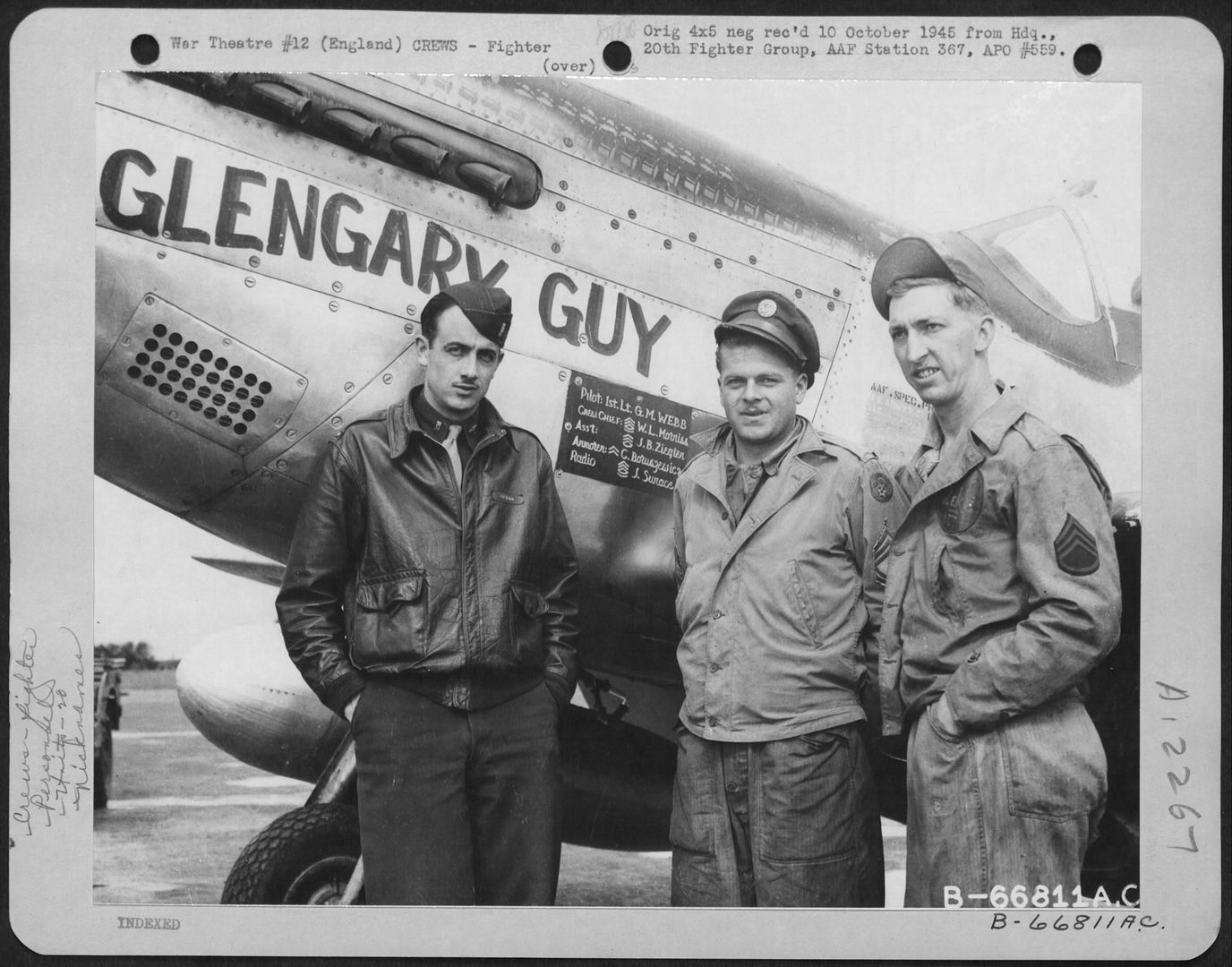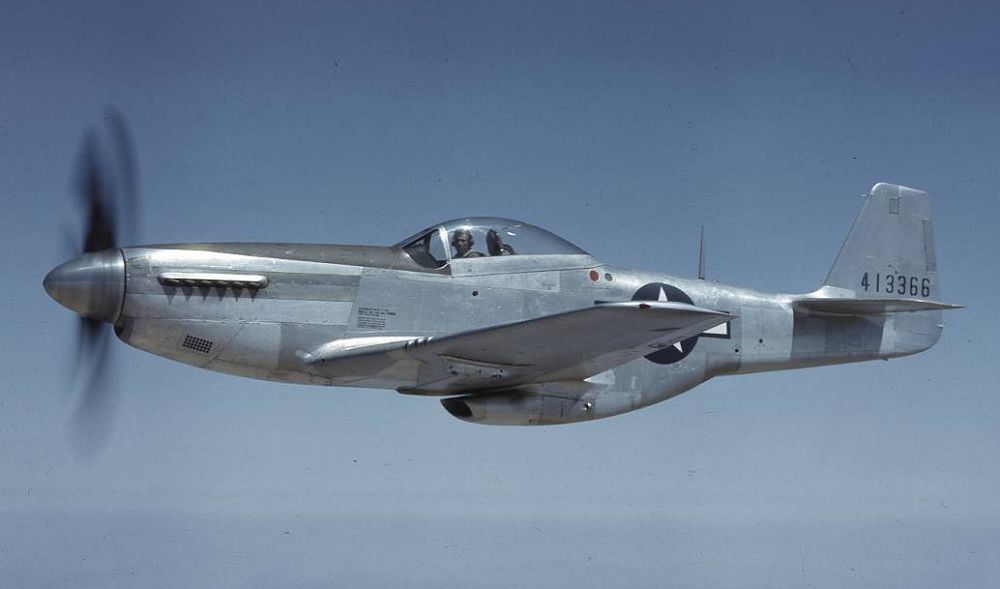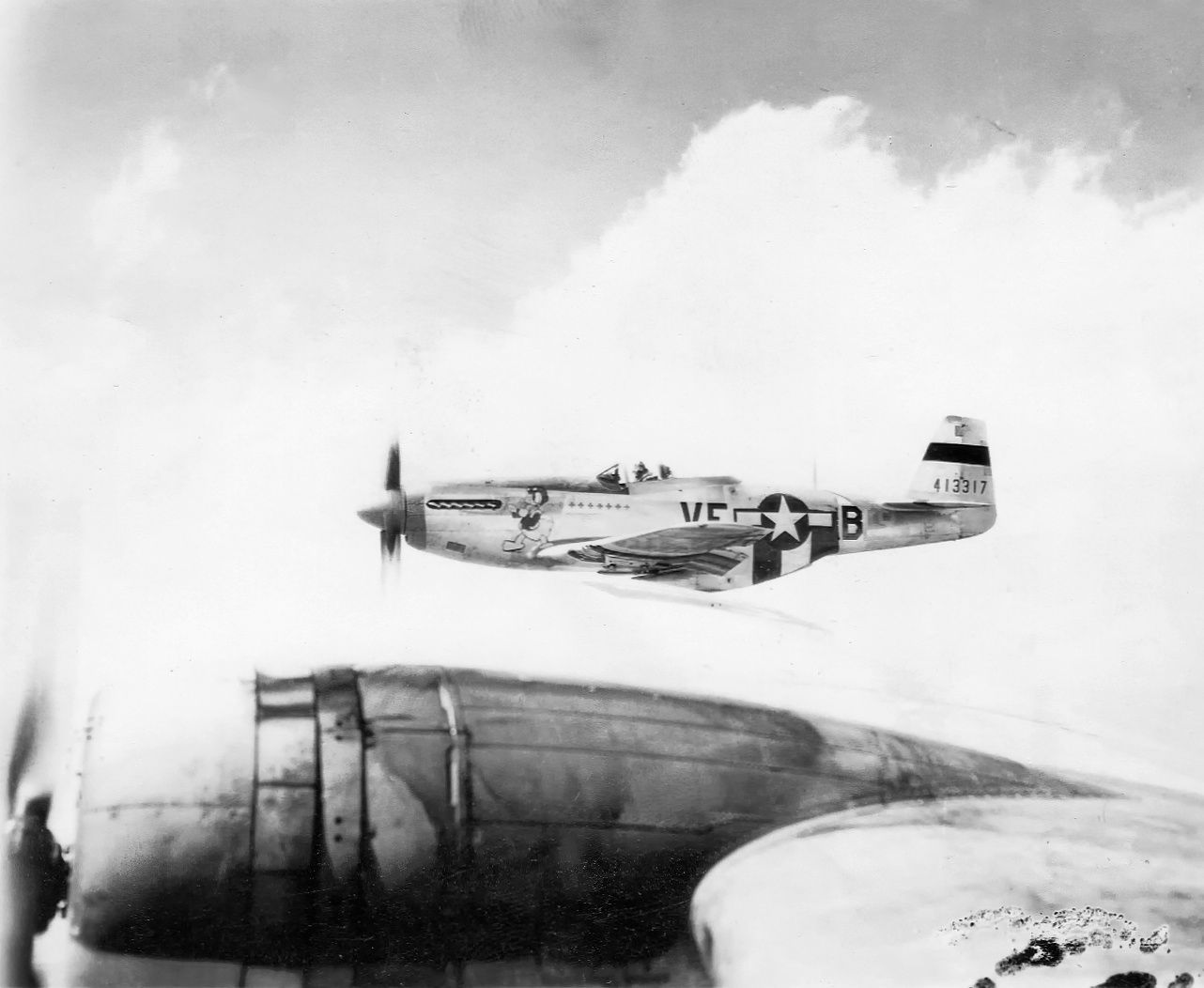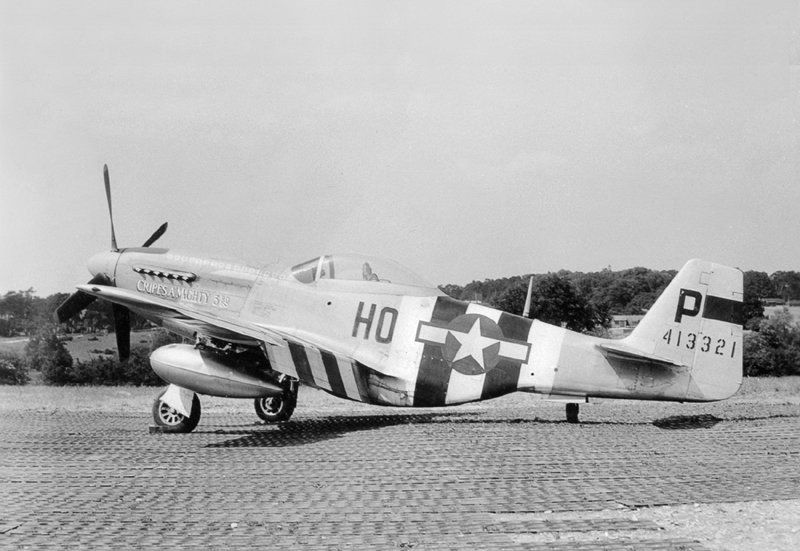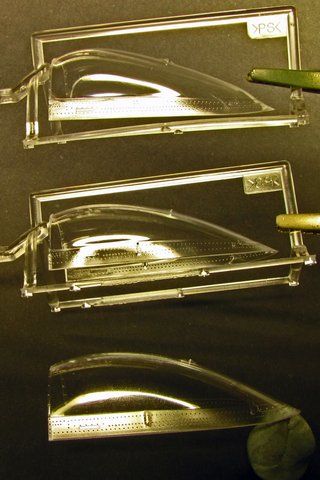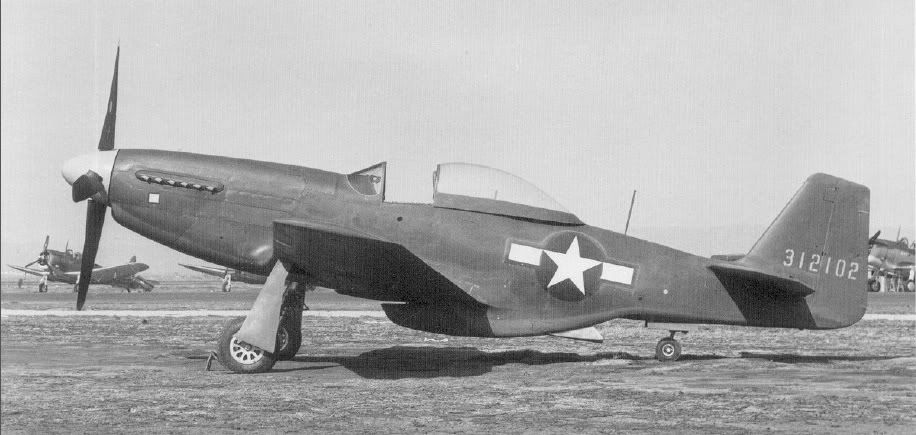Bomber_12th
SOH-CM-2025
I want to welcome everyone to another "history lesson" from your resident Mustang aficionado (putting it lightly). : ) I also want to spend some time introducing you to one of Warbirdsim’s up-coming products for FSX, the P-51D-5-NA. I hope you enjoy!
The Birth of the P-51D
Not all too unlike the original request for P-51 development, or the integration of the Rolls-Royce Merlin engine into the airframe, or even the genesis of the name itself -Mustang - the initial concept behind what would become the P-51D, the most known and recognized of the series of Mustang fighters, can be traced directly to Britain.
<o ></o
></o >
>
By early 1943, the British had figured out how to create a bubble or “teardrop” canopy, providing a clear 360-degree view all around, and began installing them to the latest mark Spitfires and Typhoons. The USAAF sent Col. Mark Bradley to <st1:country-region w:st="on">England</st1:country-region> in January of ’43, to “learn the workings of this new canopy and find a way to get them onto <st1:country-region w:st="on"><st1 lace w:st="on">U.S.</st1
lace w:st="on">U.S.</st1 lace></st1:country-region> fighters.” Upon return, Bradley immediately set forth to incorporate this new style of canopy design into <st1:country-region w:st="on"><st1
lace></st1:country-region> fighters.” Upon return, Bradley immediately set forth to incorporate this new style of canopy design into <st1:country-region w:st="on"><st1 lace w:st="on">U.S.</st1
lace w:st="on">U.S.</st1 lace></st1:country-region> fighter production. The first USAAF fighter so tested was the Republic P-47.
lace></st1:country-region> fighter production. The first USAAF fighter so tested was the Republic P-47.
<o ></o
></o >
>
Not wasting any time, P-51B-1, 43-12102 was selected off the North American Aviation assembly line, to be modified as a test aircraft for the new bubble canopy, and house-designated the NA-109. The new canopy provided almost complete unobstructed vision, with virtually no distortion from the free-blown glazing. This new canopy was mounted to rollers, connected via chain and pulley to a manual hand-crank assembly on the starboard side of the cockpit. In order to accommodate this new canopy, the rear fuselage had to be cut down. This modified P-51B took flight for the first time on November 17, 1943, under the control of famed NAA test pilot Bob Chilton.
<o ></o
></o >
>
The success of 43-12102 led NAA to modify P-51B-10-NA 43-106539 and 43-106540, under a new house-designation, NA-106. These aircraft would effectively become the first of the true line of P-51D’s, officially titled XP-51D, and later P-51D-NA. Beyond the canopy modifications, the aircraft’s wings were also modified, with the addition of six .50-in machine guns (rather than four, as on previous Mustangs). The new mounting setup for the machine guns also corrected the gun-jamming issues that plagued the P-51B’s and C’s.
<o ></o
></o >
>
The landing gear operation was also re-designed, and this led to an increase in the wing root chord. The angle of the main landing gear struts, the main landing gear doors, and the entire main gear wells were completely changed. Improvements were also made to the effectiveness and strength of the ailerons. The landing light was moved from the wing leading edge to inside the landing gear well.
<o ></o
></o >
>
The very first production P-51D’s, officially titled P-51D-5-NA’s, began to enter service in Europe in late May and early June, 1944, just in time for the D-Day invasion, and the events that followed. Some of the most all-time recognizable P-51D’s – “LouIV,” “Cripes A’ Mighty 3rd,” “Frenesi,” “Hurry Home Honey,” “Donald Duck,” “Flying Dutchman,” “Happy Jack’s Go Buggy,” and the 52nd FG “Marie” – were P-51D-5-NA’s.
<o ></o
></o >
>
By mid-late P-51D-5-NA production, a report that the tails of P-51B’s, C’s, and D’s were failing structurally due to violent snap-rolls, had to be addressed. North American engineered a fillet for the dorsal fin, which tapered up into the vertical stabilizer from the point of the production-break between the fuselage and tail assemblies. This fillet both added more structural strength, and also cut down on the violent effects of snap-rolling the aircraft. This fillet was first installed on the last few production P-51D-5-NA’s, and into P-51D-10-NA production. Through a technical order that was issued, kits were also sent to all P-51D-5-NA’s and early Mustangs already operating in the field. These fillets were of a slightly different construction-design than those fitted in production of later P-51D’s.
<o ></o
></o >
>
Now, to dig into some of the finer details of what made the P-51D-5-NA unique to any other D-model, I have compiled together a list of just some of the unique details that set it apart, and I hope to illustrate these points through screenshots of Warbirdsim’s up-coming P-51D-5-NA product. This is by far the most focused P-51D-5-NA ever designed for any flight simulator platform, and I hope to continue to provide more screenshots and information on the product, through updates posted to this thread, up until the point that the product is released in the coming days. All screenshots feature “work-in-progress”, thus-far.
The Birth of the P-51D
Not all too unlike the original request for P-51 development, or the integration of the Rolls-Royce Merlin engine into the airframe, or even the genesis of the name itself -Mustang - the initial concept behind what would become the P-51D, the most known and recognized of the series of Mustang fighters, can be traced directly to Britain.
<o
By early 1943, the British had figured out how to create a bubble or “teardrop” canopy, providing a clear 360-degree view all around, and began installing them to the latest mark Spitfires and Typhoons. The USAAF sent Col. Mark Bradley to <st1:country-region w:st="on">England</st1:country-region> in January of ’43, to “learn the workings of this new canopy and find a way to get them onto <st1:country-region w:st="on"><st1
<o
Not wasting any time, P-51B-1, 43-12102 was selected off the North American Aviation assembly line, to be modified as a test aircraft for the new bubble canopy, and house-designated the NA-109. The new canopy provided almost complete unobstructed vision, with virtually no distortion from the free-blown glazing. This new canopy was mounted to rollers, connected via chain and pulley to a manual hand-crank assembly on the starboard side of the cockpit. In order to accommodate this new canopy, the rear fuselage had to be cut down. This modified P-51B took flight for the first time on November 17, 1943, under the control of famed NAA test pilot Bob Chilton.
<o
The success of 43-12102 led NAA to modify P-51B-10-NA 43-106539 and 43-106540, under a new house-designation, NA-106. These aircraft would effectively become the first of the true line of P-51D’s, officially titled XP-51D, and later P-51D-NA. Beyond the canopy modifications, the aircraft’s wings were also modified, with the addition of six .50-in machine guns (rather than four, as on previous Mustangs). The new mounting setup for the machine guns also corrected the gun-jamming issues that plagued the P-51B’s and C’s.
<o
The landing gear operation was also re-designed, and this led to an increase in the wing root chord. The angle of the main landing gear struts, the main landing gear doors, and the entire main gear wells were completely changed. Improvements were also made to the effectiveness and strength of the ailerons. The landing light was moved from the wing leading edge to inside the landing gear well.
<o
The very first production P-51D’s, officially titled P-51D-5-NA’s, began to enter service in Europe in late May and early June, 1944, just in time for the D-Day invasion, and the events that followed. Some of the most all-time recognizable P-51D’s – “LouIV,” “Cripes A’ Mighty 3rd,” “Frenesi,” “Hurry Home Honey,” “Donald Duck,” “Flying Dutchman,” “Happy Jack’s Go Buggy,” and the 52nd FG “Marie” – were P-51D-5-NA’s.
<o
By mid-late P-51D-5-NA production, a report that the tails of P-51B’s, C’s, and D’s were failing structurally due to violent snap-rolls, had to be addressed. North American engineered a fillet for the dorsal fin, which tapered up into the vertical stabilizer from the point of the production-break between the fuselage and tail assemblies. This fillet both added more structural strength, and also cut down on the violent effects of snap-rolling the aircraft. This fillet was first installed on the last few production P-51D-5-NA’s, and into P-51D-10-NA production. Through a technical order that was issued, kits were also sent to all P-51D-5-NA’s and early Mustangs already operating in the field. These fillets were of a slightly different construction-design than those fitted in production of later P-51D’s.
<o
Now, to dig into some of the finer details of what made the P-51D-5-NA unique to any other D-model, I have compiled together a list of just some of the unique details that set it apart, and I hope to illustrate these points through screenshots of Warbirdsim’s up-coming P-51D-5-NA product. This is by far the most focused P-51D-5-NA ever designed for any flight simulator platform, and I hope to continue to provide more screenshots and information on the product, through updates posted to this thread, up until the point that the product is released in the coming days. All screenshots feature “work-in-progress”, thus-far.

